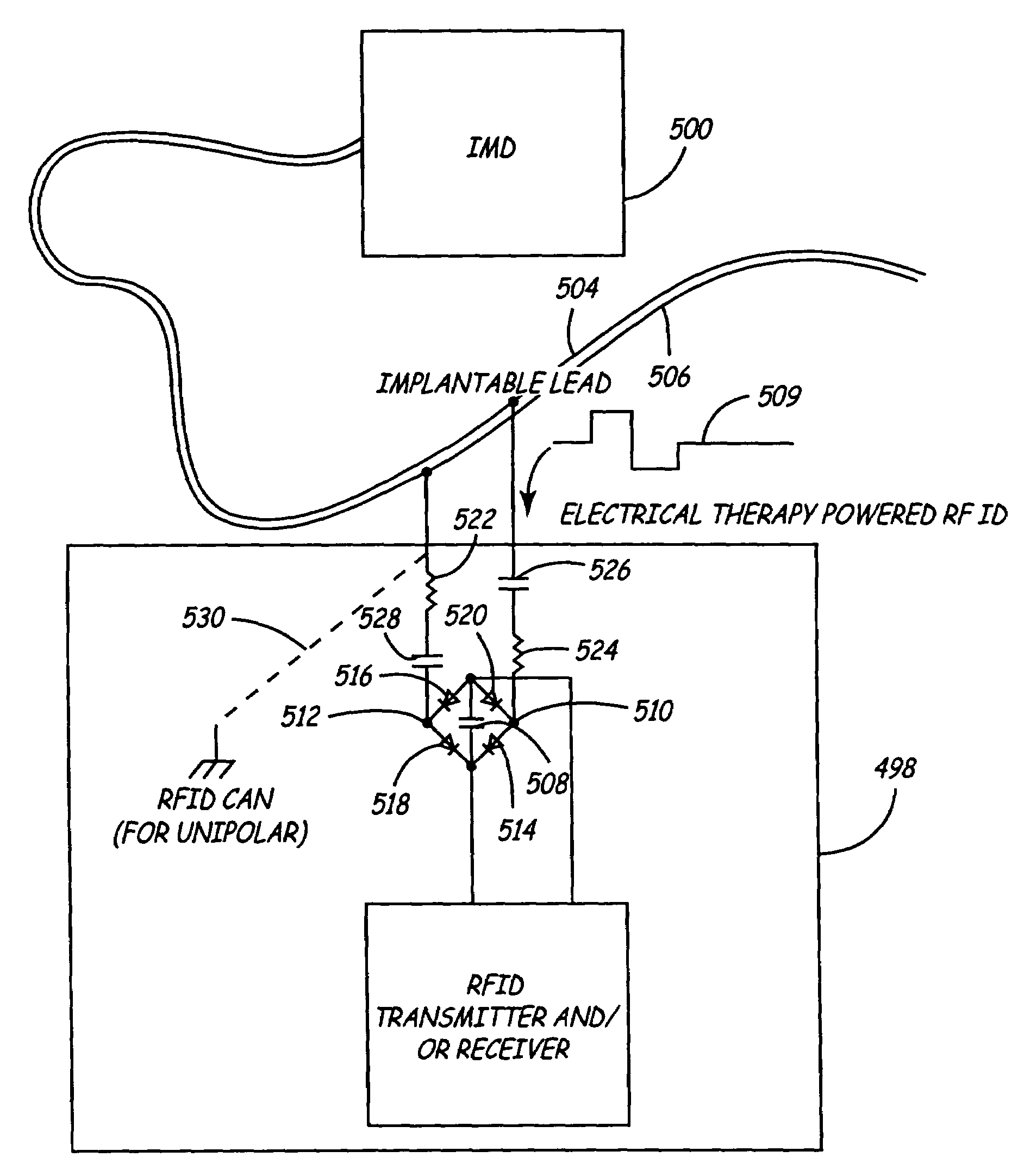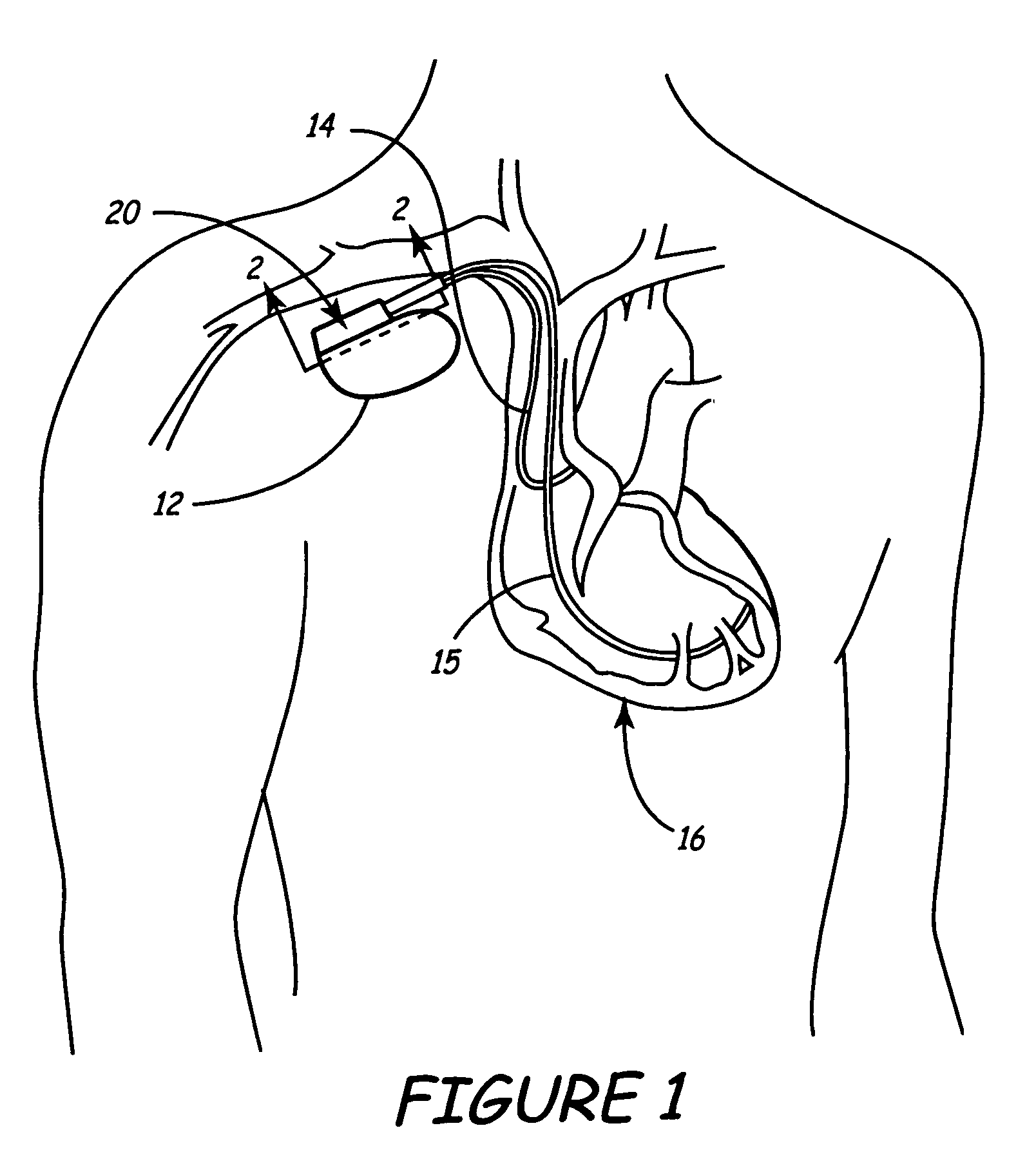Method and apparatus for automatic implantable medical lead recognition and configuration
- Summary
- Abstract
- Description
- Claims
- Application Information
AI Technical Summary
Benefits of technology
Problems solved by technology
Method used
Image
Examples
Embodiment Construction
[0037]FIG. 1 is a schematic view of an implantable medical device (IMD) 12 implanted within a body. Leads 14 and 15 are shown coupled to the connector assembly 20 of IMD 12 using one or more feedthroughs. IMD 12, which may be implanted near a human heart 16 or at another location in the body, may be a pacemaker, cardioverter / defibrillator, drug delivery device, brain stimulator, gastric stimulator, nerve stimulator, or any other implantable device. For example, implantable medical device 12 may be an implantable cardiac pacemaker such as that described in U.S. Pat. No. 5,158,078 to Bennett et al., U.S. Pat. No. 5,312,453 to Shelton et al., or U.S. Pat. No. 5,144,949 to Olson et al. Alternatively, IMD 12 may be a pacemaker-cardioverter-defibrillator (PCD) such as those described in U.S. Pat. No. 5,545,186 to Olson et al., U.S. Pat. No. 5,354,316 to Keimel, U.S. Pat. No. 5,314,430 to Bardy, U.S. Pat. No. 5,131,388 to Pless, or U.S. Pat. No. 4,821,723 to Baker, et al. As yet another ex...
PUM
 Login to View More
Login to View More Abstract
Description
Claims
Application Information
 Login to View More
Login to View More - R&D
- Intellectual Property
- Life Sciences
- Materials
- Tech Scout
- Unparalleled Data Quality
- Higher Quality Content
- 60% Fewer Hallucinations
Browse by: Latest US Patents, China's latest patents, Technical Efficacy Thesaurus, Application Domain, Technology Topic, Popular Technical Reports.
© 2025 PatSnap. All rights reserved.Legal|Privacy policy|Modern Slavery Act Transparency Statement|Sitemap|About US| Contact US: help@patsnap.com



